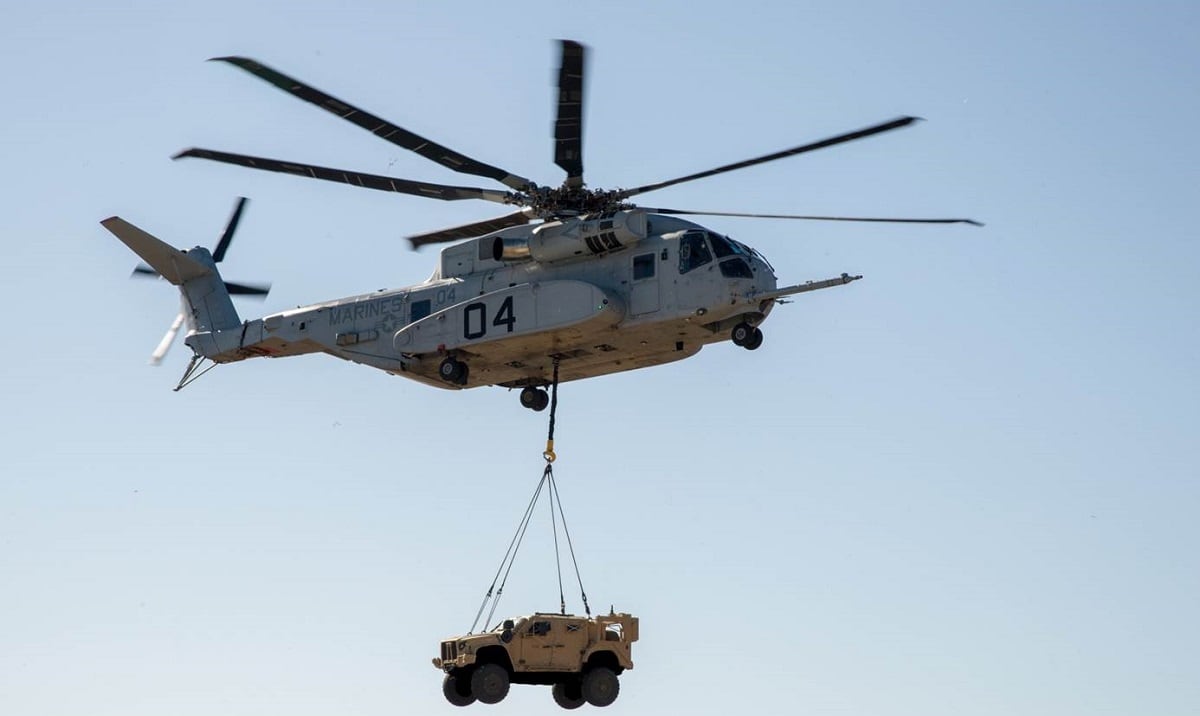Engineers have solved or mitigated most of the engine integration issues that have led to long delays of the operational date of the CH-53 King Stallion ― the Corps’ most powerful heavy lift helicopter ― Marine officials said Tuesday.
The Corps originally planned to have the new heavy lift King Stallion operational by this December, but a series of mechanical issues discovered in the helicopter led to serious setbacks in the planned testing dates.
After receiving the helicopter in May 2018, the Corps found roughly 125 technical issues, including a major issue with exhaust gas reingestion, requiring design updates before the helicopter could be deployed, Capt. Christopher Harrison, a Marine Corps spokesman, told Marine Corps Times in a Tuesday morning email.
Harrison said the initial operational date is still expected to be pushed back to 2021, a delay of nearly two years, but the setbacks are not expected to affect the first operational deployment of the helicopter scheduled for 2024.
Since the issues were discovered, government engineers alongside Sikorsky Aircraft engineers have been able to solve more than 100 of the technical issues, including the exhaust gas re-ingestion problem, the Corps said.
Beyond the initial technical issues the Marine Corps also has come under criticism for the cost of the program.
The estimated cost of the program was at nearly $138 million per helicopter, Marine Corps Times previously reported, while the first awarded contract to Sikorsky for two low-rate initial productions of heavy-lift helicopters was a total $303,874,406 or roughly $152 million for each of the two aircraft.
The Corps maintains that even with the unanticipated problems that needed to be solved, the final cost over the life for the rest of the helicopters will be around $87 million per aircraft.
The King Stallion is expected to be a key asset in the Marine Corps’ shift to a focus on the Pacific and its plan for a more distributed force.
With a max external lift of 36,000 pounds and the capability of moving 27,000 pounds for 110 nautical miles, the helicopter will be able to move some of the Marine Corps’ heaviest equipment to Marines located on small remote outposts.
The CH-53K is equipped with a T-408 engine built by General Electric, billed as being more powerful and fuel efficient than the T-64 engine used in the CH-53E Super Stallion.
“It was great to see the team turn the corner for the program and produce a resolution to an ongoing problem," Col. Jack Perrin, PMA-261 program manager with the heavy lift helicopter program office, said in the press release. “This was a priority for NAVAIR, industry and the Marine Corps, and the team hit it out of the park.”





